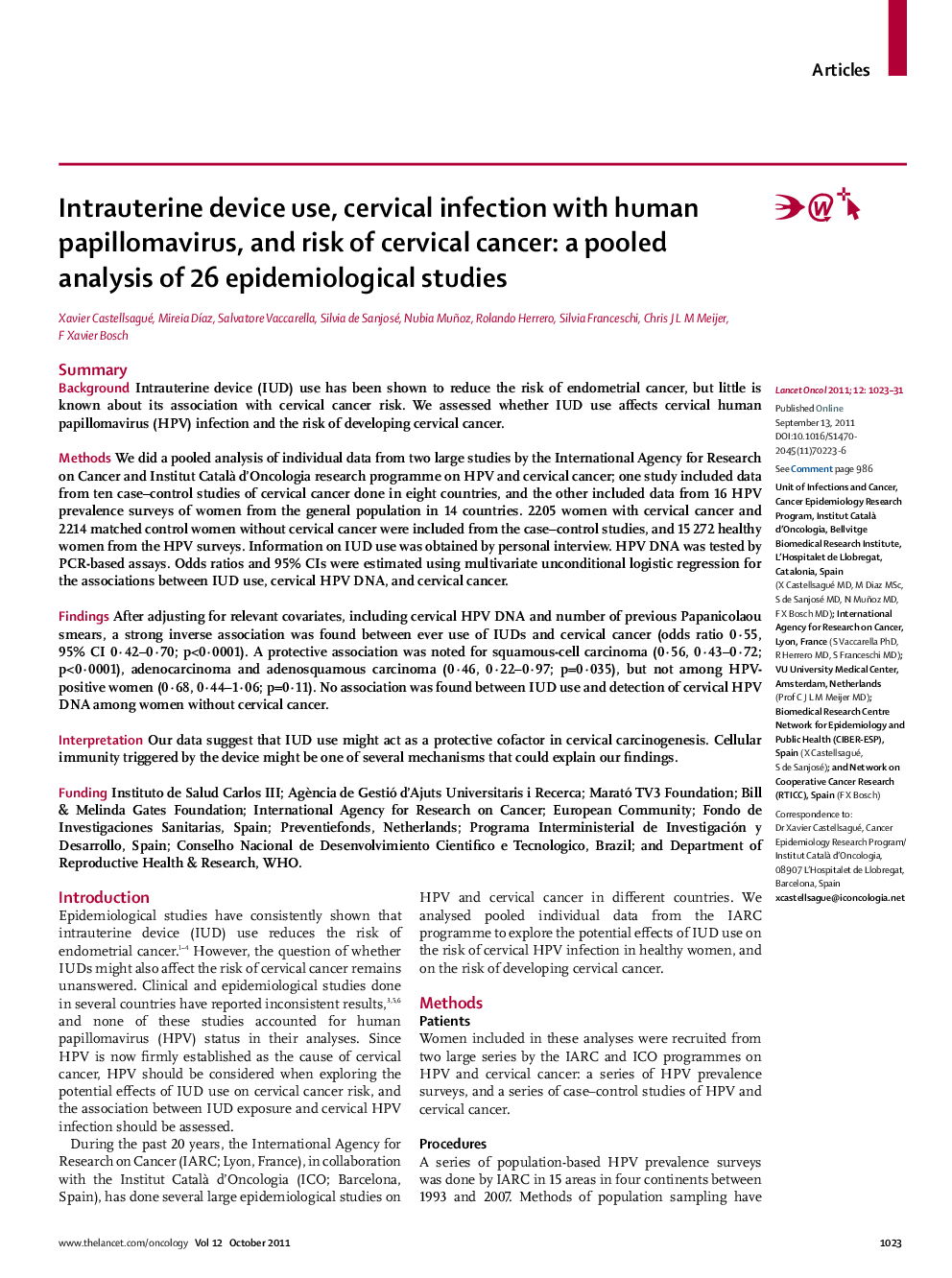| کد مقاله | کد نشریه | سال انتشار | مقاله انگلیسی | نسخه تمام متن |
|---|---|---|---|---|
| 3995011 | 1258925 | 2011 | 9 صفحه PDF | دانلود رایگان |

SummaryBackgroundIntrauterine device (IUD) use has been shown to reduce the risk of endometrial cancer, but little is known about its association with cervical cancer risk. We assessed whether IUD use affects cervical human papillomavirus (HPV) infection and the risk of developing cervical cancer.MethodsWe did a pooled analysis of individual data from two large studies by the International Agency for Research on Cancer and Institut Català d'Oncologia research programme on HPV and cervical cancer; one study included data from ten case–control studies of cervical cancer done in eight countries, and the other included data from 16 HPV prevalence surveys of women from the general population in 14 countries. 2205 women with cervical cancer and 2214 matched control women without cervical cancer were included from the case–control studies, and 15 272 healthy women from the HPV surveys. Information on IUD use was obtained by personal interview. HPV DNA was tested by PCR-based assays. Odds ratios and 95% CIs were estimated using multivariate unconditional logistic regression for the associations between IUD use, cervical HPV DNA, and cervical cancer.FindingsAfter adjusting for relevant covariates, including cervical HPV DNA and number of previous Papanicolaou smears, a strong inverse association was found between ever use of IUDs and cervical cancer (odds ratio 0·55, 95% CI 0·42–0·70; p<0·0001). A protective association was noted for squamous-cell carcinoma (0·56, 0·43–0·72; p<0·0001), adenocarcinoma and adenosquamous carcinoma (0·46, 0·22–0·97; p=0·035), but not among HPV-positive women (0·68, 0·44–1·06; p=0·11). No association was found between IUD use and detection of cervical HPV DNA among women without cervical cancer.InterpretationOur data suggest that IUD use might act as a protective cofactor in cervical carcinogenesis. Cellular immunity triggered by the device might be one of several mechanisms that could explain our findings.FundingInstituto de Salud Carlos III; Agència de Gestió d'Ajuts Universitaris i Recerca; Marató TV3 Foundation; Bill & Melinda Gates Foundation; International Agency for Research on Cancer; European Community; Fondo de Investigaciones Sanitarias, Spain; Preventiefonds, Netherlands; Programa Interministerial de Investigación y Desarrollo, Spain; Conselho Nacional de Desenvolvimiento Cientifico e Tecnologico, Brazil; and Department of Reproductive Health & Research, WHO.
Journal: - Volume 12, Issue 11, October 2011, Pages 1023–1031